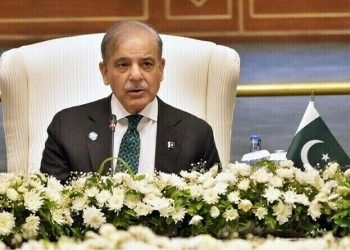LAHORE: The Punjab Pension Fund (PPF) is expected to earn a net return of Rs31 billion in FY 2023-24, and the assets of the fund are expected to reach Rs140 billion by the end of June 30, 2024.
As per budget document, the Punjab government has made a total contribution of Rs48.8 billion to the Fund until June 2023, while the Fund has earned the remaining amount through its investments. The fund has also contributed Rs5.5 billion in FY 2023-24 towards payment of the government’s pension liabilities.
It may be added that the Punjab Pension Fund has been created to partially invest funds set aside by the Government to meet its future pension liability. In addition to the pension scheme, the government requires its permanent employees to subscribe to the General Provident (GP) Fund, a defined contribution scheme. The Punjab government passed the Punjab General Provident Investment Fund Act, 2009 to establish an investment fund to manage GP Fund liabilities of the government.
It may be noted that the Finance Department has been endeavouring to maximize its existing resources by reforming the pension system. The government has identified the mounting pension liabilities as one of the key risks to the fiscal health of the province in the years to come.
The Punjab government has undertaken a comprehensive review of the policy options for the pension system, including the development of a Defined Contribution scheme for new employees, along with changes to the existing Defined Benefits scheme.
As per budget document, pension payments in Punjab are accounting for approximately 19% of current expenditure in FY2024- 25 (more than doubling from 9.8% in FY11).
On the other hand, the Punjab General Provident Investment Fund’s assets are expected to reach Rs23 billion on June 30, 2024. The government contributed Rs10 billion to the Fund to date, while the Fund earned the remaining Rs13 billion through its investments.
Moreover, the size of commodity debt is projected to escalate to Rs1,151 billion by the end of 2024. The escalating debt burden, coupled with high interest rate environment, the existing model for commodity operations was becoming unsustainable and posed a threat to the sustainability of commodity operations and carried significant fiscal risk for the government.
Recognizing the urgency to tackle debt challenge and mitigate the unchecked growth of commodity debt, the provincial cabinet approved imperative principles for future shape of commodity operations with directions to retire unsecured portion of commodity debt (portion of debt not secured by wheat stock). This resulted in debt repayment of Rs745 billion during FY-2023 and FY-2024, out of which Rs469 billion (FY23: 225, FY24: 244) was paid by Finance Department specifically for accelerated debt repayment. As of June 2024, the outstanding commodity debt is anticipated to stand at Rs375 billion including Rs20 billion interest, secured by wheat stock valued at Rs221 billion (based on price of Rs3,900 per maund) resulting in unsecured portion of debt at Rs154 billion.









